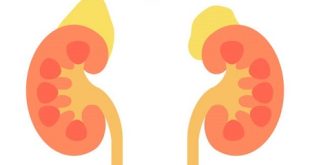Definition
Compartment syndrome is a condition that occurs when the injury causes generalized painful swelling and increased pressure within a compartment to the point that blood cannot supply the muscles and nerves with oxygen and nutrients. Muscles in the forearm, lower leg and other body areas are surrounded by fibrous bands of tissues. This creates distinct compartments. The fibrous tissue is very inflexible and cannot stretch to accommodate the generalized swelling. If left untreated, muscles and nerves fail and may eventually die.
While most often occurring in the forearm and lower leg, compartment syndrome can rarely occur in other parts of the body that have muscles contained in compartments, including the hands and feet. Compartment syndrome may occur acutely due to swelling that arises from injury, or it may be chronic because of exertion such as exercise.
Pathophysiology
In a normal human body, blood flow from the arterial system (higher pressure) to venous system (lower pressure) requires a pressure gradient. When this pressure gradient is diminished, blood flow from the artery to the vein is reduced. This causes a backup of blood and excessive fluid to leak from the capillary wall into spaces between the soft tissues cells, causing swelling of the extracellular space and a rise in intracompartmental pressure. This swelling of the soft tissues surrounding the blood vessels compresses the blood and lymphatic vessels further, causing more fluid to enter the extracellular spaces, leading to additional compression. The pressure continues to increase due to the non-compliant nature of the fascia containing the compartment. This worsening cycle can eventually lead to a lack of sufficient oxygen in the soft tissues (tissue ischemia) and tissue death (necrosis). Tingling and abnormal sensation (paraesthesia) can begin as early as 30 minutes from the start of tissue ischemia and permanent damage can occur as early as 12 hours from the onset of the inciting injury.
Types of Compartment Syndrome
Acute compartment syndrome
- Is the most common type of compartment syndrome. It’s estimated that 75% of cases are because of bone fracture.
- Other causes include crush injuries, burns, excessively tight limb bandaging, surgery, blood clots, vigorous exercise & anabolic steroid usage.
- The hallmark sign is pain when the muscle is stretched with possible tingling and burning.
- Muscle weakness or paralysis are considered immediate medical emergency.
Chronic compartment syndrome
- Typically develops over a period of weeks to months due to excessive physical activity stress.
- Pain typically subsides when activity stops or reduces in intensity.
- Associated symptoms may include transient numbness, reduced limb range of movement & swelling.
Risk factors
A number of factors increase the risk. Not all people with risk factors will get compartment syndrome. Risk factors for compartment syndrome include:
- Involvement in a car accident or other serious trauma
- Participation in dangerous activities that may result in traumatic injuries to the legs or arms
- Participation in extreme endurance athletic events
Causes of Compartment Syndrome
It typically develops after car collisions or broken bones.
Conditions that may cause acute compartment syndrome include:
- Fractures
- Crush injuries
- Steroid use
- Constricting bandages
- Severely bruised muscles (potentially after a motorcycle accident)
Causes of chronic compartment syndrome include:
- Too much activity, too quickly- exercising too hard, too quickly or too often can cause chronic compartment syndrome because the blood pressure increases and the muscles expand; the pressure cuts off the blood supply to the muscle.
- Enlarged muscles- enlarged muscles can cause the blood supply to be cut off to the tissues.
Compartment Syndrome symptoms
Symptoms of acute compartment syndrome develop within a few hours of injury. These include:
- Severe and continuous pain in an arm or leg
- Absence of sensation, feelings of numbness in an arm or leg
- Bruises, swelling, tightness in an area
Compartment syndrome in foot
Symptoms of chronic compartment syndrome are usually related to extreme exertion of the body. These usually subside when the individual rests. Some common symptoms include:
- Intense pain
- Tingling and/or burning sensations
- Stiffness in the arm or leg
- Difficulty in moving the legs
- Muscle bulging
Complications
Individuals may experience complications. These can range from minor to serious issues. Some complications are temporary while others might be permanent.
Complications can include:
- Scarring
- Infection
- Loss of limb function
- Amputation
- Nerve damage
- Muscle failure
- Muscle breakdown
- Kidney failure
Diagnosis and test
Other exercise-related problems are more common than chronic exertional compartment syndrome, so your doctor may first try to rule out other causes such as shin splints or stress fractures before moving on to more specialized testing.
Results of physical exams for chronic exertional compartment syndrome are often normal. Your doctor might prefer to examine you after you’ve exercised to the point of bringing on symptoms. Your doctor may notice a muscle bulge, tenderness, or tension in the affected area.
Imaging studies
Imaging studies may include:
MRI: A typical MRI scan of your legs can be used to evaluate the structure of the muscles in the compartments and rule out other possible causes of your symptoms.
An advanced MRI scan can help assess the fluid volumes of the compartments. Images are taken at rest, while moving your foot until you feel symptoms, and after the exercise. This type of MRI scan has been found to be accurate in detecting chronic exertional compartment syndrome, and may reduce the need for the invasive compartment pressure testing.
Near infrared spectroscopy (NIRS): NIRS is a newer technique that measures the amount of oxygen in your blood in the affected tissue. The test is done at rest and after physical activity. This helps determine if your muscle compartment has decreased blood flow.
Compartment pressure testing
- If results from imaging studies do not show a stress fracture or similar cause of pain, your doctor might suggest measuring the pressure within your muscle compartments.
- This test, often called compartment pressure measurement, is the gold standard for diagnosing chronic exertional compartment syndrome. The test involves the insertion of a needle or catheter into your muscle before and after exercise to make the measurements.
- Because it’s invasive and mildly painful, compartment pressure measurement usually isn’t performed unless your medical history and other tests strongly suggest you have this condition.
Treatment and medications
Treatment for acute compartment syndrome
Early Decompression
One of the main forms of treatment for acute compartment syndrome is that of early decompression. This can be achieved by lying with the legs elevated to reduce swelling. If the pressure in the tissue remains, as well as other symptoms, a proper decompressing fasciotomy and vascular repair can be performed.
Elevation
For those who are believed to be developing compartment syndrome, placing the affected limb above heart level is ideal. Elevation is often contraindicated because it causes a decrease in the arterial flow and narrows the pressure gradient of the arterial-venous vessels.
Immobilization
For those who have a tibial fracture and compartment syndrome, immobilizing the ankle or lower leg using plantar flexion is required to help decrease pressure while preventing any anterior pressure from increasing.
Cast Removal
Casts and bandages need to be removed. Releasing a single side of the cast can alleviate pressure by 30 percent and bivalving reduces the pressure by an additional 35 percent. Completing removing the cast can provide an additional 15 percent reduction for a total of 85 percent from the original baseline.
Treatment for Chronic compartment syndrome
Chronic compartment syndrome isn’t usually dangerous, and can sometimes be relieved by stopping the exercise that triggers it and switching to less strenuous activity.
Nonsurgical treatment
Physiotherapy, orthotics (inserts for shoes), and non-steroidal anti-inflammatory medicines are sometimes suggested. They have had questionable results for relieving symptoms.
Your symptoms may subside if you avoid the activity that caused the condition. Cross-training with low-impact activities may be an option. Some athletes have symptoms that are worse on certain surfaces (concrete vs. running track, or artficial turf vs. grass). Symptoms may be relieved by switching surfaces.
Surgical treatment
If conservative measures fail, surgery may be an option. Similar to the surgery for acute compartment syndrome, the operation is designed to open the fascia so that there is more room for the muscles to swell. Usually, the skin incision for chronic compartment syndrome is shorter than the incision for acute compartment syndrome. Also, this surgery is typically an elective procedure, not an emergency.
Prevention of compartment syndrome
Currently, there is no prevention. However, by following certain guidelines, while exercising and participating in sports activities, individuals can protect themselves against a future risk for the condition. These guidelines include:
- Warm-up with light exercises, adequate stretching, etc. before advancing to heavy exercising or commencing any sports activity
- Keep an adequate time period, to gradually cool down, after each exercising session
- Maintain a healthy diet
- Stay adequately hydrated, before, during, and after exercising/sports activities
 Diseases Treatments Dictionary This is complete solution to read all diseases treatments Which covers Prevention, Causes, Symptoms, Medical Terms, Drugs, Prescription, Natural Remedies with cures and Treatments. Most of the common diseases were listed in names, split with categories.
Diseases Treatments Dictionary This is complete solution to read all diseases treatments Which covers Prevention, Causes, Symptoms, Medical Terms, Drugs, Prescription, Natural Remedies with cures and Treatments. Most of the common diseases were listed in names, split with categories.








how many bones are in body
What is the cause some pinching pain on the lower spine and at the back of the knee going down?